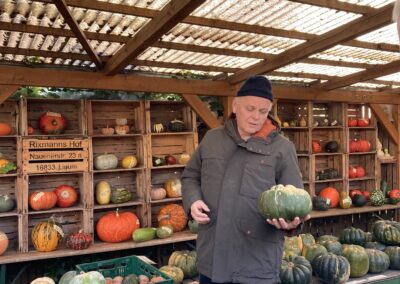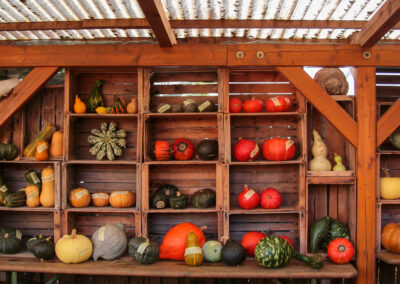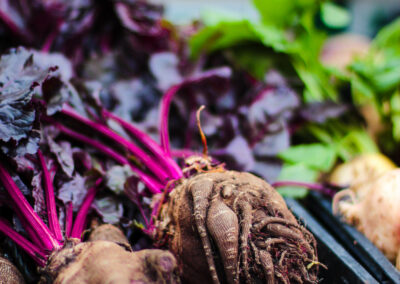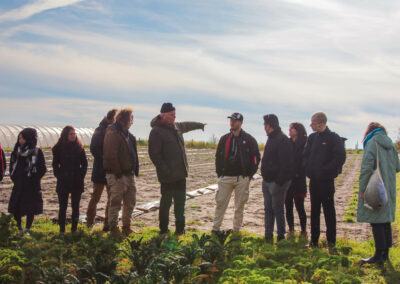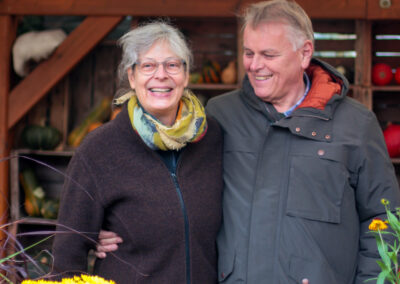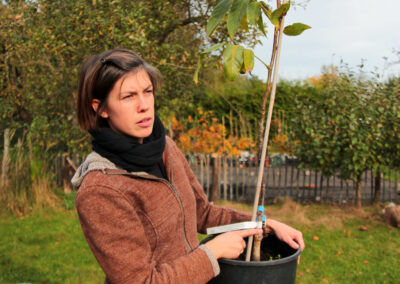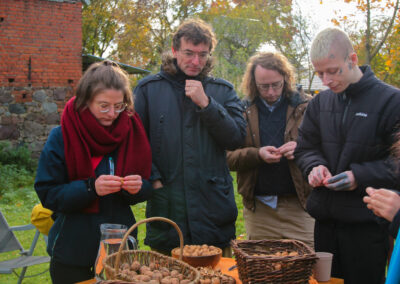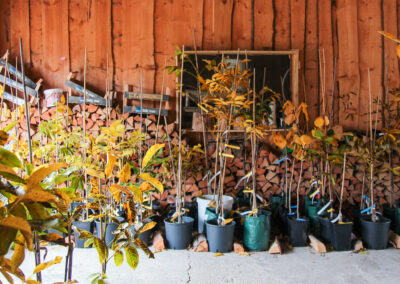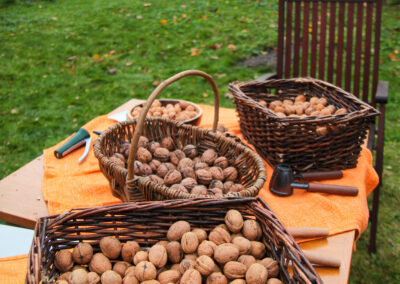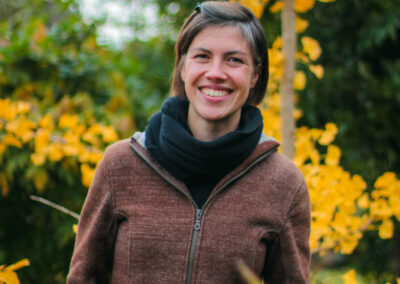We organise farm visits in the Berlin area which are specifically intended for gastronomes and farmers. Our aim is to share knowledge about agricultural cultivation methods, spark a conversation around product quality, and show the connection of individual ingredients to our whole food system. Through these farm visits, we bring producers and cooks closer together and nurture their mutual appreciation.
Rixmanns Hof
Sabine Schwalm and Georg Rixmann grow fruit and vegetables on around 16 hectares. They are particularly specialised in the great diversity of pumpkins, of which they grow 250 different varieties. When growing vegetables, they like to experiment with varieties that we are less familiar with and try out which of them grow in Brandenburg. Like the cardoon, for example, a plant that is known from the Mediterranean region and can almost be confused with artichoke in terms of taste.
Because this diversity of varieties is not always available as organic seed, Sabine and Georg do without organic certification, although they work according to its principles. Although exemptions can be made for each variety, these are expensive and only valid for one season, so biodiversity almost puts one at a competitive disadvantage. The costs of the organic label are often difficult to bear for small farms. Not to mention the so-called club varieties, which are in the hands of large economic players.
We also talked to Georg about the need for a logistics concept in Berlin-Brandenburg, as well as the unique history of the agricultural structure in eastern Germany.
Rixmanns Hof: Website | Facebook
Photos: Carla Ulrich – Website | Instagram
Walnussmeisterei Böllersen
Vivian Böllersen was already highly interested in the potential of the walnut in Germany during her studies at the University for Sustainable Development (Eberswalde). Why? Because walnuts are not only of great ecological value, but also very interesting economically. Whether in forestry, wood production, urban greening or industry – almost every part of the walnut can be utilised. They are also an integral part of our eating culture on the plate. Today, however, most walnuts are imported.
In 2015, Vivian Böllersen and Marcel Schatte founded the Walnussmeisterei. There they not only cultivate walnut trees extensively and ecologically on 4.5 hectares of grassland, but also test which of the more than 30 varieties is adapted to the Brandenburg location. The aim is to recover and share knowledge about the native cultivation of walnuts.
Vivian’s final thesis on walnut cultivation in Germany has been published. Anyone who wants to dive deeper into the subject can get their hands on the book via her website.
Walnussmeisterei Böllersen: Website | Instagram
Photos: Carla Ulrich Website | Instagram
